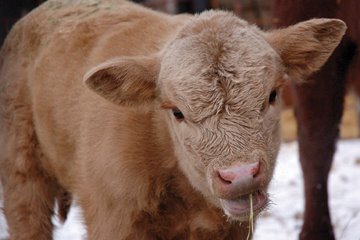No question about it: The 2006 United Nations report Livestock’s Long Shadow put a new jolt into animal-rights and other anti-meat campaigns.
The report’s claim that 18 percent of global greenhouse gases are caused by animal agriculture has become a rallying cry for activists whose fondest wish is to weld the animal rights and environmental movements into one giant behemoth to remake the way we eat. But something has always smelled a little funny about that “18 percent,” and we worked to put a finger on it.
The Marlborough Express reports that the company’s marketing manager spoke with Pierre Gerber, a livestock policy officer who co-authored the UN report. And Gerber apparently agreed that “18 percent” was a generalization that might not apply to every country.
“Buried in the report,” writes Express reporter Jon Morgan, “is the information that deforestation—mainly in the Amazonian rainforest—is included in that figure. Without it, livestock’s contribution falls to less than 12 per cent.”
They don’t clearcut or burn down forests for pasture land in New Zealand, you see. And neither do we in the United States.
But even 12 percent still sounded a bit unrealistic. So we went digging.
In April the Environmental Protection Agency released a massive 473-page report called the Inventory of U.S. Greenhouse Gas Emissions and Sinks: 1990-2006. It’s a complete accounting of global-warming-related emissions in the United States and where they come from. Here’s what the EPA has to say:
In 2006, the agricultural sector was responsible for emissions of 454.1 teragrams of CO2 equivalent (Tg CO2 Eq.), or 6 percent of total U.S. greenhouse gas emissions.
Yes, six percent. Not 18 or 12. And that six percent represents all of agriculture, not just meat production. It includes greenhouse-gas emissions from farming cotton, wheat, broccoli, soybeans (tofu, anyone?), and everything else that comes out of the ground.
It gets more interesting still. The EPA actually separates out the various kinds of agricultural emissions, including two categories (“manure management” and “enteric fermentation”) which are clearly related to raising animals for food, and many (like “rice cultivation”) which clearly are not.
The livestock-related greenhouse-gas emissions from 2006 add up to 181.9 teragrams of CO2 equivalent. And the EPA reports that the entire United States emitted 7,054.2 teragrams during that year.
We did the math. Greenhouse-gas sources directly related to livestock production in the United States only account for 2.58 percent of the total. And the latest USDA figures we could find, show that 95 percent of the animal products we consume are produced right here in the United States.
In addition to deforestation, the UN report counts livestock-related carbon emissions from a few other sources that the EPA doesn’t consider. Burning fuels to make fertilizer, for instance, along with tilling soil to grow feed crops, and the transportation of meat to market. But we’re asking ourselves this: If livestock production disappeared tomorrow, wouldn’t we just be transporting more tofu around? And wouldn’t we just be plowing and fertilizing the land to supply PETA’s vegetarian utopia?
That settles it for us. “Livestock’s Long Shadow” has officially disappeared, at least where domestic meat production is concerned. All it took was a little bit of light.
For related articles on this subject, head to the Center for Consumer Freedom.
- Source: www.BEEFmagazine.
Welcome to the Online Edition of Cattle Country!
Updated with every new issue
Past issues will be available in the archive. If you are interested in reading Late Breaking News between paper deadlines, scroll down to the bottom of the page. The most recent information will be posted first.
Past issues will be available in the archive. If you are interested in reading Late Breaking News between paper deadlines, scroll down to the bottom of the page. The most recent information will be posted first.

Friday, March 13, 2009
Subscribe to:
Post Comments (Atom)

No comments:
Post a Comment